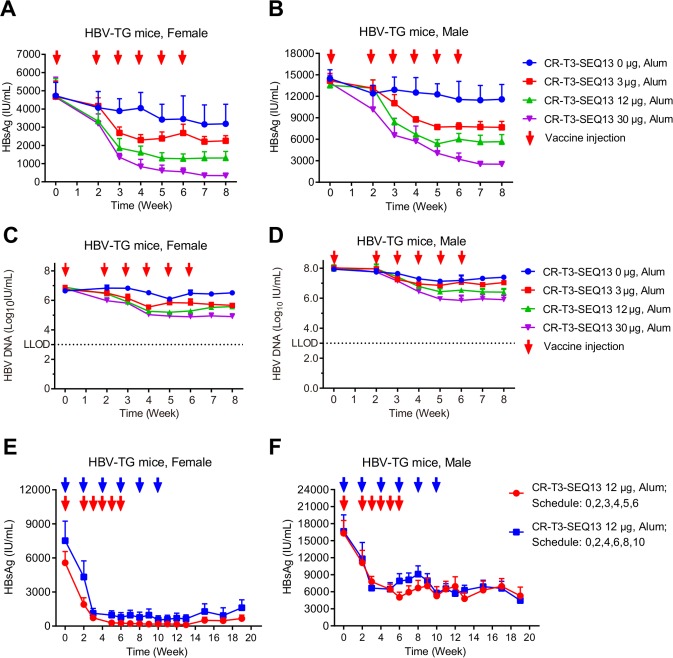Figure 3.
CR-T3-SEQ13 can significantly inhibit HBsAg and HBV DNA in HBV transgenic mice in a dose-dependent manner and sustain the suppression effects for a long time. (A–D) HBV transgenic mice were intramuscular injected with vaccine formulations containing fixed alum adjuvant dose (840 µg/mL) and different antigen doses, including 30 µg, 12 µg and 3 µg and 0 µg, respectively. A total of 6 doses were injected at 0, 2, 3, 4, 5 and 6 weeks. (A) Dynamics of HBsAg level in female HBV-Tg mice; (B) dynamics of HBsAg level in male HBV-Tg mice; (C) dynamics of HBV DNA level in female HBV-Tg mice; and (D) dynamics of HBV DNA level in male HBV-Tg mice. (E–F) HBV-Tg mice were injected with vaccine formulations containing 840 µg/mL of alum adjuvant and 12 µg of CR-T3-SEQ13 at 0, 2, 3, 4, 5 and 6 weeks and 0, 2, 4, 6, 8 and 10 weeks, respectively. (E) Dynamics of HBsAg level in female HBV-Tg mice vaccinated by different schedule; (B) dynamics of HBsAg level in male HBV-Tg mice vaccinated by different schedule. The data represent mean±SEM, n=4. HBsAg, hepatitis B virus surface antigen.

